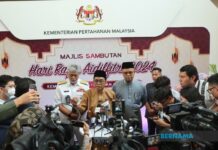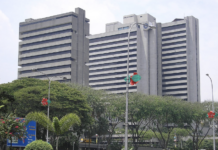DUNGUN, Jan 27 — The system of selective felling of forest trees can help in the conservation of wildlife and forest ecosystem, and ensuring sustainability for the future generations.
Terengganu Forestry Department director, Roslan Rani said among the methods used in selective felling was leaving 32 or more trees of medium size and felling only 10 or 12 mature trees per hectare of forests.
“The Forestry Department has guidelines and certain standard operating procedure (SOP) to adhere to in meeting the specifications in this selective tree felling system, in line with our commitment to managing the forests for sustainability.
“There are the criteria in limiting the felling of trees including conducting a survey on the trees, stock content and on the mature trees that can be felled in order to protect the wildlife habitats.”
Roslan said this to reporters after a gotong-royong event held in conjunction with the campaign of planting 100 million trees under the state-level Malaysia Greening Programme, here, today.
He was asked to comment on the possibility of logging activities having an adverse impact on the wildlife habitats and population, especially tigers.
He said for areas near rivers, some zones could not be disturbed such as the right and left buffer zones of the rivers.
“These areas are the usual routes of the animals and should remain in their original form. Any construction project to be implemented in the area should be planned well to avoid uncontrolled felling of trees.
“The fruit trees should also not be felled as each tree has its own identity and the felling method is different,” he added.
Currently, Terengganu has 480,000 hectares of production forests which can yield revenue, 120,000 hectares of protected forests with no development allowed and 103,000 hectares gazetted as State Park.



















